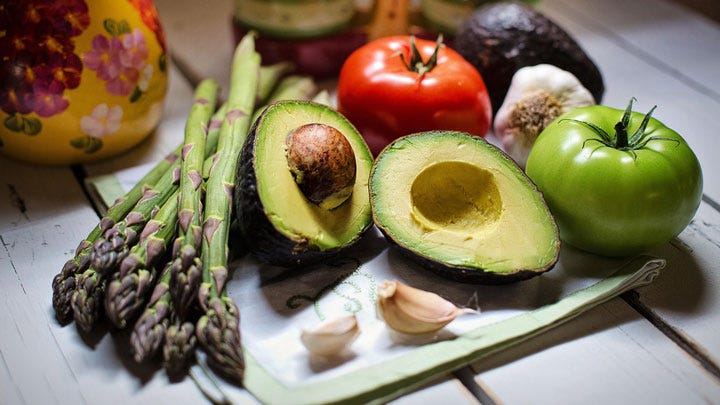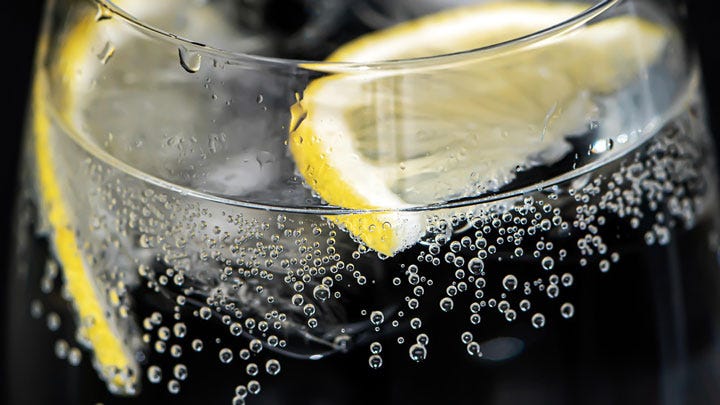The Importance of The Sodium-Potassium Balance
Salt Smart & Potassium Powered: Discover daily habits, foods, and herbal allies to restore your body’s natural balance.
Our bodies are like symphonies of water, minerals, and electricity. And at the heart of this music, two essential minerals—potassium and sodium—are constantly dancing, flowing, balancing each other with every heartbeat, nerve impulse, and cellular exchange.
This isn’t just biochemistry. It’s body wisdom.
When potassium and sodium are in harmony, you feel energized, focused, and strong. But when they fall out of step, things like fatigue, muscle cramps, bloating, brain fog, or heart palpitations start to creep in.
Is it too much processed salt? Too little potassium? Or maybe you juice all day with no salt at all… What problems will this create?
First, let’s look at how this dance works. And then we’ll discover what you can do each day to support this balance with food, herbs, and hydration to work with your body, not against it.
⚖️ The Sodium-Potassium Balancing Act
Imagine your cells as little water balloons. Sodium hangs out outside the balloons, in the fluid between your cells (the extracellular fluid). Potassium lives mostly inside the cells. The tension between them helps move nutrients in and waste out, while also keeping your cells the perfect shape and hydration.
This system relies on a powerful mechanism called the sodium-potassium pump — your body’s cellular electrician. It’s active 24/7, and it needs both minerals (plus a little magnesium for spark!) to do its job. (1)
Have you heard of ATP, the energy for the mitochondria? For every ATP your cells use, they release sodium and take in potassium. You need both of these electrolytes, but how much of each? You actually need more potassium — 4700 mg per day — vs. approximately 2300 mg of sodium. Rounding just a bit, then you need 2 mgs potassium for every 1 mg of sodium. (2)
An adequate sodium to potassium ratio is 1:2. Unfortunately, today’s modern diet flips the ratio, with many Americans eating almost 1.5 mgs sodium for every mg of potassium. Traditional cultures often had a ratio higher than 1:4. And our paleolithic ancestors likely consumed a ratio as high as 1:16 — that’s one mg sodium for 16 mgs potassium! (3)
What happens when you stray from that ratio? High blood pressure is probably the first outward sign. In a 2024 analysis, researchers discovered that any ratio beyond 1:2 — with an increase in dietary salt and / or a decrease in potassium — may affect lifespan. (4)
When Sodium and Potassium are in balance, you feel:
Hydrated but not puffy
Alert but calm
Strong but relaxed
Steady energy, good digestion, and a clear mind
🚱 The Hidden Danger of Modern Dehydration
Most people think dehydration just means “not drinking enough water,” but modern dehydration often looks more like this:
Drinking too much plain water without minerals (think “tap” water)
Sweating out electrolytes without replacing them
Eating processed foods that are high in sodium but low in potassium
Trying fad diets, like the carnivore diet, that are heavy on low-potassium foods
Draining adrenal reserves due to chronic stress
The result? Your cells can’t hold water properly. You may feel thirsty all the time, bloated, dizzy, or zapped of energy — even if you’re drinking a lot of water.
💧 Everyday Lifestyle Habits to Support Mineral Balance
1. Salt Your Food With The Right Kind
Refined table salt is just sodium chloride with additives. However, your body craves mineral-rich salt. Not only does unrefined salt contain sodium chloride, but it has other trace minerals important for your body, including, believe it or not, potassium. Each form of salt has its benefits. So try different brands to see which you enjoy most: Celtic sea salt, Himalayan pink salt, Redmond Real Salt, or our favorite Baja Gold Mineral Sea Salt.
👉 If you’ve had a diet heavy in processed foods, it’s best to refrain from adding any salt to your food and increasing potassium intake first. So start with potassium-rich foods. Once the refined salt burden has been lifted, you can add mineral-rich salts to your diet.
2. Eat Potassium-Rich, Whole Plant Foods
Potassium is abundant in fresh, real foods from the earth. People often see their health improve when they start drinking green juices. That’s because they’re flipping that sodium-potassium ratio in favor of potassium. Potassium is, of course, highest in plant foods — that is, tubers, fruits, and vegetables — but raw cheese, yogurt, and nuts also contain a good amount of potassium. Try these high-potassium choices: (5)
Avocados
Baked Yams or Potatoes (with skin)
Bananas
Coconut water
Beets and beet greens
Acorn Squash
Lima Beans and Lentils
👉 These foods nourish your cells from the inside, helping them retain hydration and function.
Note: potassium is a mineral, so cooking does not damage it; however, cooking in water will cause some of the potassium to leach out of the food and into the cooking water.
3. Start the Day with Mineral Water or Herbal Infusion
Skip the cold, chlorinated tap water first thing. Instead, add sea salt to your morning spring water. (Looking for the freshest water on Earth? Click Here: Find A Spring.)
Warm water + lemon + pinch of sea salt
Herbal infusions like nettle or oatstraw, which are naturally mineral-rich
This gives your body usable minerals and gentle hydration, especially after an overnight detox.
For more on healing water, check out this recent podcast with David Avocado Wolfe and guests from Fractal Water.
4. Support Your Adrenals
The adrenal glands regulate both potassium and sodium via hormones like aldosterone. When your sodium-potassium ratio stays out of balance, your body needs to make adjustments to keep your blood pressure stable and your kidneys working. If you’re also chronically stressed, the adrenal glands burn out — and electrolyte balance suffers. (6)
Support your adrenals with plenty of rest, natural sunlight, and adaptogenic herbs, like ashwagandha, rhodiola, or holy basil (tulsi).
5. Add Mineral Drops or Shilajit to Water
If your water is low in minerals (most tap or filtered water is), boost it naturally with:
Trace mineral drops from a trusted brand
Shilajit resin, which is particularly rich in fulvic acid and over 80 trace minerals
A teaspoon (or 2!) of natural sea salt per liter of water
This helps your body absorb the water instead of just flushing it through.
🌿 Herbal Allies for Electrolyte Harmony
Herbs can be gentle but powerful allies in this mineral balancing act. Try one of the following herbs this week!
Nettle Leaf: Loaded with potassium, calcium, and magnesium. Infuse overnight for a supportive morning brew.
Oatstraw: Supports the nervous system and provides trace minerals. Combine with nettle for a calming tea.
Hibiscus: Naturally high in potassium, hibiscus supports a healthy blood pressure. Steep in simmering water for 5-10 minutes to create a tart, refreshing tea.
Dandelion Leaf: Natural electrolyte balancer and a mild diuretic. Use fresh in salads (very high in vitamin C!) or make a tea with dried leaves.
Tulsi (Holy Basil): This adaptogen helps regulate stress and supports the adrenals. Take as a dietary supplement in tincture or powdered form, or drink as a soothing tea.
🌈 The Natural Rhythm
Nature designed our bodies to thrive on whole foods, sunlight, movement, and minerals from the earth. When we follow her rhythm—hydrating with minerals, eating vibrant plant foods, and listening to our body’s signals—we restore the balance our cells are craving.
So next time you feel off, tired, bloated, or thirsty, don’t just reach for water—reach for mineral wisdom. Let sodium and potassium dance in harmony, and your whole system will sing.
These statements have not been evaluated by the Food and Drug Administration. This information is not intended to diagnose, treat, cure, or prevent any disease.
Join the David Avocado Wolfe Substack Community
This is where transformation begins — are you ready to join us?
Wolfe University
Ready to go all-in? Experience the new Wolfe University with both free and paid courses, as well as the platform for David Wolfe's Inner Circle.
David Avocado Wolfe Links
David Wolfe Website: https://www.davidwolfe.com/
Wolfe University: https://university.davidwolfe.com/
David Wolfe Shops
US: https://shop.davidwolfe.com/
UK: https://davidwolfe.uk/
Our favorite Chocolate Factory is now located in Central Florida! Please visit Butler’s Raw Chocolates! 2400 South Hopkins Avenue, Unit E, Titusville, FL 32780
Butler’s Raw Chocolates: https://butlersrawchocolates.com/
Links on this page may be affiliate links; any proceeds support the work of David Avocado Wolfe.






